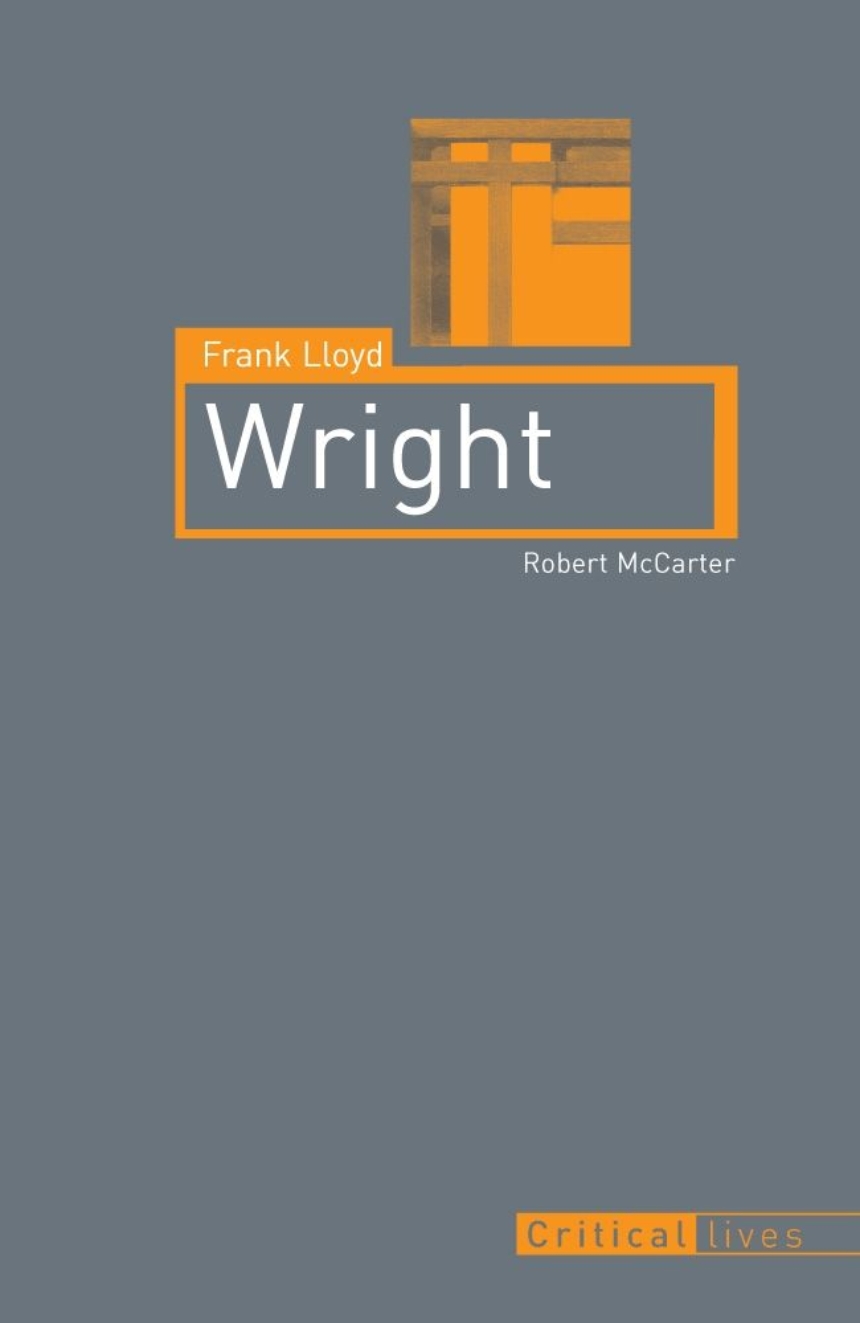Distributed for Reaktion Books
Frank Lloyd Wright
A cultural icon who defined the twentieth-century American landscape, Frank Lloyd Wright has been studied from what seems to be every possible angle. While many books focus on his works, torrid personal life, or both, few solely consider his professional persona, as a man enmeshed in a web of prominent public figures and political ideas. In this new biography, Robert McCarter distills Wright’s life and work into a concise account that explores the beliefs and relationships so powerfully reflected in his architectural works.
McCarter examines here how Wright aspired to influence America’s evolving democratic society by the challenges his buildings posed to traditional views of private and public space. He investigates Wright’s relationships with key leaders of art, industry, and society, and how their views came to have concrete significance in Wright’s work and writings. Wright argued that architecture should be the “background or framework” for daily life, not the “object,” and McCarter dissects how and why he aspired to this and other ideals, such as his belief in the ethical duty of architects to improve society and culture.
A penetrating study of the foremost pioneer in modern architecture, Frank Lloyd Wright offers a fascinating biographical chronicle that reveals the principles and relationships at the base of Wright’s production.
McCarter examines here how Wright aspired to influence America’s evolving democratic society by the challenges his buildings posed to traditional views of private and public space. He investigates Wright’s relationships with key leaders of art, industry, and society, and how their views came to have concrete significance in Wright’s work and writings. Wright argued that architecture should be the “background or framework” for daily life, not the “object,” and McCarter dissects how and why he aspired to this and other ideals, such as his belief in the ethical duty of architects to improve society and culture.
A penetrating study of the foremost pioneer in modern architecture, Frank Lloyd Wright offers a fascinating biographical chronicle that reveals the principles and relationships at the base of Wright’s production.
224 pages | 36 halftones | 5 x 7 7/8 | © 2006
Architecture: American Architecture, Architecture--Biography
Reviews
Table of Contents
Introduction: Wright at the Defining Moment
1. Unity and Nature’s Geometry
2. Chicago and the Tradition of Practice
3. White City and New World Monumentality
4. Prairie House and the Progressive Movement
5. Europe and the Shining Brow
6. Eastern Garden and Western Desert
7. Fellowship and the Disappearing City
8. Natural House and the Fountainhead
9. Usonia Lost and Found
Epilogue: Wright in the Rearview Mirror
References
Bibliography
Acknowledgements
Photographic Acknowledgements

